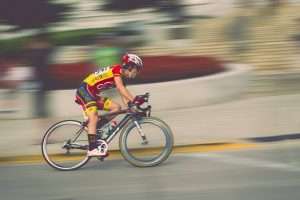What is the maximum speed of a bicycle?
Introduction:
The bicycle is a simple and elegant invention used for transportation, fun, and competition for many years. It might not be as fast as a car or as exciting as a roller coaster, but it has its own special qualities. One interesting question is how fast a bicycle can go. In this article, we will look at what affects bicycle speed, the current records, and how people and technology push the limits to reach top speeds.
Explanation:
Factors Influencing Bicycle Speed:
Several factors contribute to the speed a bicycle can achieve. Understanding these elements is crucial to appreciate the complexities involved in pushing the boundaries of bicycle speed.
Human Power:
The primary source of propulsion for a conventional bicycle is human power.The rider’s strength, endurance, and pedaling efficiency play a significant role in determing how fast a bicycle can travel.
Elite cyclists undergo rigorous training regimes to enhance their cardiovascular fitness, muscular strength, and pedaling technique.
Aerodynamics:
Wind resistance, also known as aerodynamic drag, is a major factor limiting bicycle speed. Asspeed increases, the resistance from air becomes more pronounced.
Streamlined designs, aero helmets, and specialized cycling gear are developed to minimize airresistance and improve the overall aerodynamics of a bicycle.
Terrain and Surface:
The type of terrain a cyclist traverses greatly affects speed. Smooth and flat surfaces enable higher speeds compared to rough or hilly paths.
Professional cycling events often take place on well-maintained roads to optimize the conditionsfor achieving maximum speeds.
Current Records:
To gauge the upper limits of bicycle speed, we can look at existing records achieved by professional cyclists and specialized bicycles designed for speed trials.
1. Traditional Cycling Records:
The Hour Record measures how far a cyclist can go in one hour. Victor Campenaerts set the men’s record in 2019 with a distance of 55.089 kilometers, while Joss Lowden established the women’s record in 2021, covering 48.405 kilometers.
2. Specialized Speed Records:
In a controlled setting, where things like wind and terrain are optimized, cyclists using special bikes try to set speed records. Tod Reichert holds the current human-powered land speed record. He reached 144.17 km/h (89.59 mph) on a special bike called the Eta in 2016.
Pushing the Boundaries:
As technology advances and human capabilities continue to evolve, there are ongoing efforts to push the boundaries of bicycle speed. Researchers, engineers, and cyclists are collaborating to break existing records and explore new frontiers. Some noteworthy endeavors include:
1. The Human-powered Speed Challenge:
This annual event invites teams from around the world to design and build the fastest human-powered vehicles. These vehicles, often recumbent bicycles with streamlined fairings, compete to achieve the highest speeds on a straight , flat track.
2. Innovations in Bicycle Technology:
Engineers are continually experimenting with novel materials and designs to enhance the aerodynamics and efficiency of bicycles. Electric-assist bicycles, powered by both human pedaling and an electric motor, are gaining popularity and pushing the speed limits in certain categories.
3. Record-breaking Attempts:
Cyclists, driven by a desire to set new records, are undertaking ambitious speed challenges.These attempts often involve customized bicycles, rigorous training, and collaboration with experts in aerodynamics and engineering.
Conclusion:
The speed of bicycles continually evolves, driven by human capability, technological advancements, and the quest for excellence. From traditional cycling records to specialized speed challenges, the quest for higher speeds on two wheels continues to captivate the imagination of cyclists and enthusiasts worldwide.


